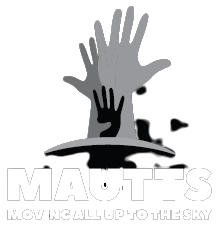About Crowdfunding

Crowdfunding is the practice of funding a project or venture by raising monetary contributions from a large number of people. Crowdfunding is a form of crowdsourcing and of alternative finance. In 2015, it was estimated that worldwide over US$34 billion was raised this way.
Although the concept can also be executed through mail-order subscriptions, benefit events, and other methods, it is now often performed via Internet-mediated registries. This modern Crowdfunding model is generally based on three types of actors: the project initiator who proposes the idea and/or project to be funded, individuals or groups who support the idea, and a moderating organization (the "platform") that brings the parties together to launch the idea.
Crowdfunding has been used to fund wide range for-profit entrepreneurial ventures such as artistic and creative projects, medical expenses, travel, or community-oriented social entrepreneurship projects.
History
Crowdfunding on the internet first gained popular and mainstream use in the arts and music communities. The first instance of Crowdfunding was in 1997, when fans underwrote an entire U.S. tour for the British rock group Marillion, raising US$60,000 in donations by means of a fan-based Internet campaign. In the film industry, independent writer/director Mark Tapio Kines designed a website in 1997 for his then-unfinished first feature film Foreign Correspondents. By early 1999, he had raised more than US$125,000 on the Internet from at least 25 fans, providing him with the funds to complete his film. In 2002, the "Free Blender" campaign was an early software Crowdfunding precursor. The campaign aimed for open-sourcing the Blender 3D computer graphics software by collecting $100,000 from the community while offering additional benefits for donating members.
Crowdfunding gained traction after the launch of ArtistShare, in 2003. Following ArtistShare, more Crowdfunding sites started to appear on the web such as IndieGoGo (2008), Kickstarter (2009), and Microventures (2010). However, Sellaband, started in 2006 as a music-focused platform, initially controlled the Crowdfunding market. This can be contributed to creators and funders, who perceive the platform to be more valuable with more members. Later, Kickstarter gained popularity for its wide-ranging focus. Both platforms prohibit equity funding. However, Sellaband offered revenue sharing, a type of equity Crowdfunding, for three years after the platform’s founding. It was later controlled by a German company and heightened security restrictions. The phenomenon of Crowdfunding is older than the term "Crowdfunding". According to wordspy.com, the earliest recorded use of the word was in August 2006.
Types
The Crowdfunding Centre's May 2014 report identified two primary types of Crowdfunding:
- Rewards Crowdfunding: entrepreneurs pre-sell a product or service to launch a business concept without incurring debt or sacrificing equity/shares.
- Equity Crowdfunding: the backer receives shares of a company, usually in its early stages, in exchange for the money pledged.
Reward-based
Reward-based Crowdfunding has been used for a wide range of purposes; including motion picture promotion, free software development, inventions development, scientific research, and civic projects.
Many characteristics of rewards-based Crowdfunding, also called non-equity Crowdfunding, have been identified by research studies. In rewards-based Crowdfunding, funding does not rely on location. The distance between creators and investors on Sellaband was about 3,000 miles when the platform introduced royalty sharing. The funding for these projects is distributed unevenly, with a few projects accounting for the majority of overall funding. Additionally, funding increases as a project nears its goal, encouraging what is called "herding behavior". Research also shows that friends and family account for a large or even majority, portion of early fundraising. This capital may encourage subsequent funders to invest in the project. While funding does not depend on location, observation shows that funding is largely tied to the locations of traditional financing options. In reward-based Crowdfunding, funders are often too hopeful about project returns and must revise expectations when returns are not met.
Equity
Equity Crowdfunding is the collective effort of individuals to support efforts initiated by other people or organizations through the provision of finance in the form of equity. In the United States, legislation that is mentioned in the 2012 JOBS Act will allow for a wider pool of small investors with fewer restrictions following the implementation of the act. Unlike non-equity Crowdfunding, equity Crowdfunding contains heightened "information asymmetries". The creator must not only produce the product for which they are raising capital, but also create equity through the construction of a company. Syndicates, which involve many investors following the strategy of a single lead investor, can be effective in reducing information asymmetry and in avoiding the outcome of market failure associated with equity Crowdfunding.
Software value token
Another kind of Crowdfunding is to raise funds for a project where a digital or software-based value token is offered as a reward to funders. Value tokens are endogenously created by particular open decentralized networks that and are used to incentivize client computers of the network to expend scarce computer resources on maintaining the protocol network. These value tokens may or may not exist at the time of the crowdsale, and may require substantial development effort and eventual software release before the token is live and establishes a market value. Although funds may be raised simply for the value token itself, funds raised on blockchain-based Crowdfunding can also represent equity, bonds, or even "market-maker seats of governance" for the entity being funded. Examples of such crowdsales are Augur decentralized, distributed prediction market software which raised US$4 million from more than 3500 participants; Ethereumblockchain; Digix/DigixDAO; and "The DAO."
Debt-based
Debt-based Crowdfunding (also known as "peer to peer", "P2P", "marketplace lending", or "crowdlending") arose with the founding of Zopa in the UK in 2005 and in the US in 2006, with the launches of Lending Club and Prosper.com. Borrowers apply online, generally for free, and their application is reviewed and verified by an automated system, which also determines the borrower's credit risk and interest rate. Investors buy securities in a fund which makes the loans to individual borrowers or bundles of borrowers. Investors make money from interest on the unsecured loans; the system operators make money by taking a percentage of the loan and a loan servicing fee. In 2009, institutional investors entered the P2P lending arena; for example in 2013, Google invested $125 million in Lending Club. In 2014 in the US, P2P lending totaled about $5 billion. In 2014 in the UK, P2P platforms lent businesses £749 million, a growth of 250% from 2012 to 2014, and lent retail customers £547 million, a growth of 108% from 2012 to 2014. In both countries in 2014, about 75% of all the money transferred through Crowdfunding went through P2P platforms. Lending Club went public in December 2014 at a valuation around $9 billion. Debt Crowdfunding in the U.S. has further evolved with the May 16, 2016 enactment of Title III of the JOBS Act, which allows unaccredited investors to invest directly in private businesses through regulated Funding Portals or Broker-Dealers.
Litigation
Litigation Crowdfunding allows plaintiffs or defendants to reach out to hundreds of their peers simultaneously in a semiprivate and confidential manner to obtain funding, either seeking donations or providing a reward in return for funding. It also allows investors to purchase a stake in a claim they have funded, which may allow them to get back more than their investment if the case succeeds (the reward is based on the compensation received by the litigant at the end of his or her case, known as a contingent fee in the United States, a success fee in the United Kingdom, or apactum de quota litis in many civil law systems).
Donation-based
Charity donation-based Crowdfunding is the collective effort of individuals to help charitable causes. A form of charity Crowdfunding is civic Crowdfunding, in which funds are raised to enhance public life and space.
Role
The inputs of the individuals in the crowd trigger the Crowdfunding process and influence the ultimate value of the offerings or outcomes of the process. Each individual acts as an agent of the offering, selecting and promoting the projects in which they believe. They sometimes play a donor role oriented towards providing help on social projects. In some cases, they become shareholders and contribute to the development and growth of the offering. Individuals disseminate information about projects they support in their online communities, generating further support (promoters). Motivation for consumer participation stems from the feeling of being at least partly responsible for the success of others’ initiatives (desire for patronage), striving to be a part of a communal social initiative (desire for social participation), and seeking a payoff from monetary contributions (desire for investment). Additionally, individuals participate in Crowdfunding to see new and innovative products before the public. Early access often allows funders to participate more directly in the development of the product. Crowdfunding is also particularly attractive to funders who are family and friends of a creator. It helps to mediate the terms of their financial agreement and manage each group’s expectations for the project.
An individual who takes part in Crowdfunding initiatives tends to reveal several distinct traits: innovative orientation, which stimulates the desire to try new modes of interacting with firms and other consumers; social identification with the content, cause or project selected for funding, which sparks the desire to be a part of the initiative; (monetary) exploitation, which motivates the individual to participate by expecting a payoff. Crowdfunding platforms are motivated to generate income by drawing worthwhile projects and generous funders. These sites also seek widespread public attention for their projects and platform.
Crowdfunding websites helped companies and individuals worldwide raise US$89 million from members of the public in 2010, $1.47 billion in 2011, and $2.66 billion in 2012 — $1.6 billion of the 2012 amount was raised in North America. In 2012, more than one million individual campaigns were established globally and the industry was projected to grow to US$5.1 billion in 2013 and to reach US$1 trillion in 2025. A May 2014 report, released by the United Kingdom-based The Crowdfunding Centre and titled "The State of the Crowdfunding Nation", presented data showing that during March 2014, more than US$60,000 were raised on an hourly basis via global Crowdfunding initiatives. Also during this period, 442 Crowdfunding campaigns were launched globally on a daily basis.
Platforms
As of 2012, over 450 Crowdfunding platforms had been established. Project creators need to exercise their own due diligence to understand which platform is the best to use depending on the type of project that they want to launch. Fundamental differences exist in the services provided by many Crowdfunding platforms. For instance, CrowdCube and Seedrs are Internet platforms which enable small companies to issue shares over the Internet and receive small investments from registered users in return. While CrowdCube is meant for users to invest small amounts and acquire shares directly in start-up companies, Seedrs pools the funds to invest in new businesses, as a nominated agent.
Curated Crowdfunding platforms serve as "network orchestrators" by curating the offerings that are allowed on the platform. They create the necessary organizational systems and conditions for resource integration among other players to take place. Relational mediators act as an intermediary between supply and demand. They replace traditional intermediaries (such as traditional record companies, venture capitalists). These platforms link new artists, designers, project initiators with committed supporters who believe in the persons behind the projects strongly enough to provide monetary support.
Growth engines focus on the strong inclusion of investors. They "disintermediate" by eliminating the activity of a service provider previously involved in the network. The platforms use Crowdfunding to seek stakes from a community of high net-worth private investors and match them directly with project initiators.
Source: Wikipedia








